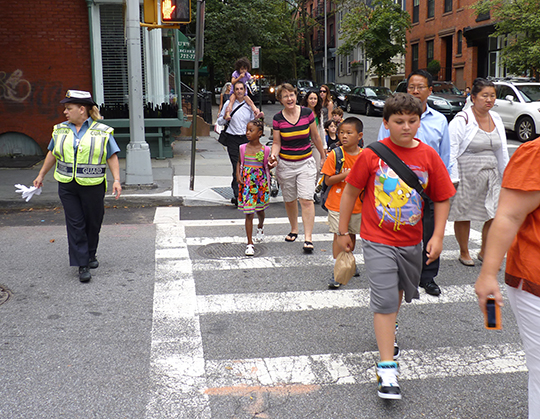New law to alleviate school overcrowding in NYC
Squadron: Addresses ‘explosion of school-age population’

Students walk to P.S. 8 in Brooklyn Heights. Photo by Mary Frost
With a third of city elementary schools significantly overcrowded, Gov. Andrew Cuomo on Tuesday signed a bill into law that will eventually help alleviate packed classrooms.
The legislation, sponsored by state Senator Daniel Squadron and Assembly Speaker Sheldon Silver, is expected to add more seats in neighborhoods experiencing population booms, like Downtown Brooklyn, Brooklyn Heights, DUMBO, Sunset Park, Bay Ridge and Williamsburg, along with crowded areas in Queens and lower Manhattan.
The law requires the School Construction Authority (SCA) to collect population data from several city sources and use this information in connection with the five-year educational facilities capital plan.
